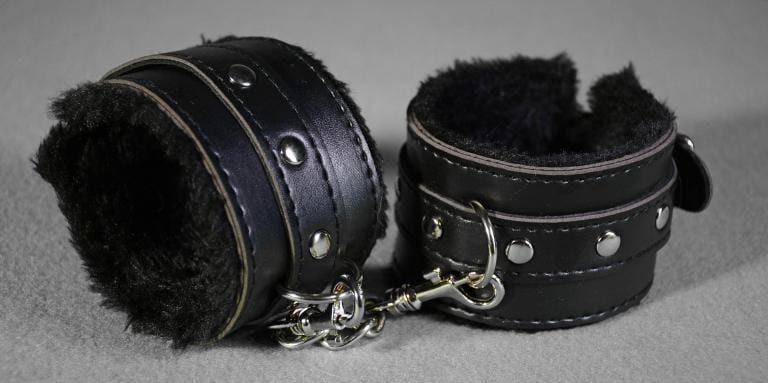I have not seen the Superbowl half-time show. But that has not prevented me from getting into arguments about it on the internet.
Or rather, having arguments about overt displays of female sexuality.
It’s interesting, because today I see the arguments that I was raised with — arguments from second wave feminism — being bandied about by religious social conservatives. The line is basically that when a woman gets up in a skimpy costume and shakes her wild thang, she is allowing herself to be used as a sex object. She is enacting a rite of female subjugation, displaying her body for the titillation of men, making herself the object of the male gaze.
For most of my life, that line of argumentation made perfect sense to me. I thought that “sex-positive” feminism was really just a capitulation to male demands for women to be sexy, desirable and constantly available.
Those of you who are long time readers will know that I have a history of trauma, a lot of it relating to sexuality. Some of that comes from issues in my marriage, a lot of it comes from having internalized the often-misogynistic messages about female sexuality in Church teaching and Catholic culture.
These last few years I’ve been working on healing and reclaiming my sense of identity, my womanhood, my life. And one of the things that has happened, that I did not at all expect, is that my sexuality has radically changed.
Before, my ex always insisted that I didn’t need to dress up, wear make-up, put on jewelry or otherwise adorn myself in order to be attractive to him. In fact, he to bought into the line that women who practice self-adornment are basically trying to alter themselves in order to perform for the male gaze.
In his defense, this was in part motivated by a genuine desire to affirm that my body and my appearance were just fine and didn’t need augmentation. It never occurred to him, or to me, that a woman’s desire for pretty things and silky lingerie might have to do with the woman herself. That inciting male desire might be, at most, a secondary motivation.
By the time I left my marriage, and shortly thereafter the Catholic church, I was almost entirely disenfranchised from my own body. I couldn’t relate to my femininity except on ideological grounds. I suspected that I was a “grey A,” that is, someone who is borderline asexual. At the very least, I had little to no libido.
And then, I started to recover. I started deconstructing the tropes that told me to be ashamed of my sexuality, that tried to spiritualize my femininity to the point where it was either disembodied or embodied solely in my womb and my capacity for reproduction, that told me it was “selfish,” “lustful,” or “vain” to want sex for my own sake, or to want to be sexy.
To my surprise I started to want to wear nice clothes. Clothes that hugged my figure and showed off my curves. Clothes with lace and frilly bits. Clothes with flower prints. And jewelry. And pretty little underthings.
But not for the “male gaze.” I wanted these things for my gaze. So that I could look in the mirror and see someone beautiful, desirable, hell, sexy.
That may sound superficial, but it’s not. Sexuality is not just a matter of sexual behaviour. When a woman is alienated from her own sexuality she doesn’t just lose her desire for sex, she loses her libido in the fullest, most Freudian sense. Not just the desire for sex, but the desire for life. Not just pleasure in the bedroom, but pleasure in the garden, and the studio, and the nursery.
Our sexuality, its power, it’s force, is only secondarily about male desire and male pleasure. Yes, when we are strong and beautiful and creative and thriving this is attractive to men. When the full glory of the wilderness within shines forth in over move of our bodies, and we dress and adorn ourselves to frame that inner power, yeah, for sure, that attracts a powerful response in men. And, you know, some women as well.
But that response is the natural desire that a sexual being has for another sexual being who is radiant and healthy. In healthy, empowered female sexuality the male erotic response is an effect — it’s not the cause or the reason why we want to claim and celebrate our bodies.
We claim and celebrate our bodies because they are the seat of our femininity, our creativity, our life. In the same way that we adorn and beautify our homes, our churches, our work-places, we adorn and beautify our bodies. It is an affirmation of the value of the body, a statement that these are not merely utility-grade meat vessels that get the all-important soul from place to place.
It is incarnational.
Nor is the power and confidence to put this beauty out there, to display it for the world, necessarily a capitulation to the male gaze.
There is a reason, for example, why the covers of women’s magazines do not show hot, muscular men. They show attractive women. Women want to look at each others bodies. We want to learn how to love and celebrate and adorn our bodies.
Yes, that can become disordered — especially when representations of feminine beauty are appropriated and distorted to fit a very narrow range of male desire. When the creativity and the passion are sapped from a woman’s sexuality and she becomes nothing more than an available set of sexual characteristics.
But that is not the essence of female sexual display. It is a perversion that leads to all kinds of problems for women because it teaches us that we have to modify ourselves in order to be sexy. It doesn’t teach us to embrace and love our bodies. It’s lust-positive, but it’s not sex positive in the feminist sense of the word.
Nor is purity culture an improvement on porn culture. (Using “porn” here to refer to appropriating women’s bodies as objects of male lust, not to the practice of depicting sex, however explicitly.) Both take as their starting point the assumption that a woman’s body and her sexuality are, first and foremost, by nature, objects of male desire.
Purity culture then condemns male desire and attempts to control it by controlling expressions of female sexuality. The female body is a valuable sex object that must be concealed and protected in order to avoid it being damaged by the wrong sort of male responses.
But it’s still a sex object.
Sex positive feminism is about fundamentally challenging the assumption that a woman’s body is primarily an object upon which the male gaze acts. It asserts, aggressively, that a woman is a sexual subject. One who is allowed to celebrate and enjoy her body and her sexuality, who is allowed to connect with the creative power of her femininity and bring that power into view, as something beautiful in its own right.
It says that we are allowed to love and display our bodies and their capacity for joy and vibrancy, pleasure and movement, without first considering how males are going respond. It decisively refuses to center the male gaze as the primary criteria for evaluating women’s bodies. And it refuses the cultural message which tells us that we are responsible for trying to take responsibility for men’s sexual feelings, that our sexuality should always be focused either on satisfying or managing male desire.
The fact that male onlookers might appreciate this and be aroused isn’t a problem unless those males feel entitled to our bodies and to our emotional labour. It’s only a problem if a man thinks that a woman’s body is an object to be manipulated, culturally or directly, in order to relieve him of responsibility for his own sexuality. A premise which must be rejected if women are ever to be seen as authentic subjects — or males to learn how to manage their sexual emotions like mature adults.
Sex positive displays of female sexuality are not about servicing the male gaze; they are all about deconstructing the idea that our sexuality is primarily for, about and subordinate to the male gaze. It’s about owning the right to be sexual on our terms, because it’s powerful, beautiful, exciting, and hell, just plain fun.
Image by Enrique Meseguer from Pixabay
Stay in touch! Like Catholic Authenticity on Facebook:












